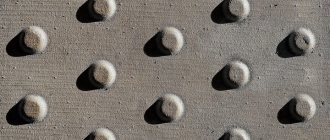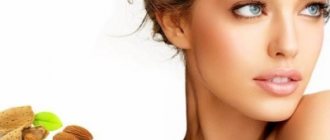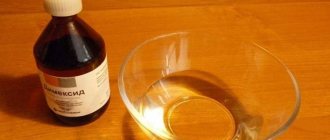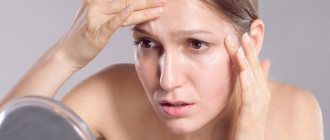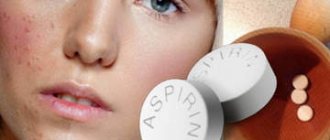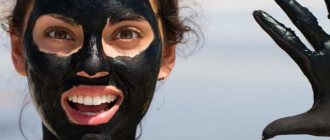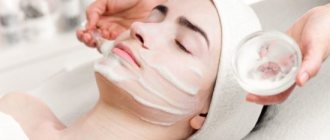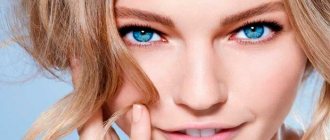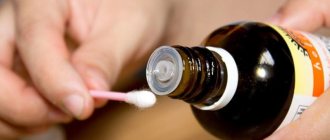Retinoids are medications in which the active substance is retinol or vitamin A. Natural sources of this substance are eggs, dairy products and liver. There is also a lot of it in rose hips, carrots, apricots, and chicory root.
But plant retinol is not used to make medicines. This provitamin A has a slightly different effect. Therefore, the main one for the manufacture of drugs is either animal or synthetic retinol.
Retinoids for the face play an important role. They participate in the metabolic process and normalize the structure of the epidermis. Help maintain skin in normal condition and rejuvenate.
Today, synthetic retinoids are used more and more often in cosmetology and dermatology. They are recommended for use in the treatment of acne, age spots, freckles, and wrinkles. Also, drugs with this substance have anti-inflammatory, anti-comedogenic and keratomodelling effects.
But these drugs can only be used as prescribed by a doctor. And in pharmacies, most drugs are sold only by prescription. Uncontrolled use of retinoids can cause severe skin irritation.
Action
If you choose the right drug and apply it to the skin strictly according to the instructions, you can achieve excellent results. this happens because:
- They help get rid of dead cells and cleanse skin pores, renewing it. This way, small wrinkles, scars, scars disappear. Clogged skin pores always mean acne, comedones and keratosis. And this is always very, very unpleasant, which makes the skin unattractive.
- Under the influence of retinol, collagen, which is native to the skin, is formed. It makes it elastic, soft, healthy, eliminates wrinkles, especially around the eyes and removes age spots.
- Retinol is good for getting rid of acne. Therefore, when other drugs and methods of traditional medicine are powerless, these drugs will always come to the rescue.
Before starting treatment, you should definitely consult with a specialist and under no circumstances self-medicate.
Two vitamins in a complex
Cosmetologists also recommend using vitamin A and E at the same time, since retinol is absorbed better and more efficiently with vitamin E. A complex of such vitamins can be found in a pharmacy under the name “Aevit”. This drug is usually recommended after a chemical peeling procedure, when the skin urgently needs restoration. The combination of two vitamins well moisturizes and cleanses the skin of the face, thereby eliminating acne, rashes, acne marks, freckles and scars in the future, which is quite important. It also evens out the complexion and eliminates inflammation.
Classification
All retinoids that are presented in pharmacies can be divided into three large groups - generations. Each of them has its own representatives with very similar actions.
First generation
This group contains the best retinoids for acne. The list looks like this:
- Retinol.
- Tretinoin.
- Isotretinoin.
- Roaccutane.
- Aknekutan.
The first retinoid drug used in the treatment of acne was tretinoin. But it should be remembered that the medicine is quickly destroyed when exposed to sunlight, so treatment in the summer is absolutely useless.
Other drugs can cause severe skin irritation, so they should be used only after consulting a doctor. They are used in the form of ointments or gels.
Second generation
Second generation retinoids are drugs that are intended to treat psoriasis, lupus erythematosus, and ichthyosis. There are only two drugs in this group:
- Etretinate.
- Acitretin.
It is a synthetic derivative of retinoic acid. The drugs are available in the form of tablets and capsules.
Third generation
After further changes in the structure of retinoids, it was possible to obtain third-generation drugs. The list usually includes two drugs:
- Tazarotene.
- Bexarotene.
They do not contain retinoic acid, but the activity of retinoids is retained. These drugs are used to treat cancer.
Features of application
Retinoids are used simultaneously with antibiotics in the treatment of acne. Typically, this regimen is prescribed for the treatment of moderate to severe acne.
It turns out that if only a few pimples appear on your face, then immediately running to the pharmacy and buying drugs from this group is a bad idea. This is due to the high likelihood of developing side effects.
The use of ointments or gels leads to dry skin and it begins to peel off greatly. This means that retinoids can only be used by people with oily skin, but under no circumstances should they be applied to dry or overly sensitive skin.
All retinoids can be divided into two other groups. Topical retinoids, which are applied to the skin and come in the form of an ointment, gel, or cream.
Systemic retinoids are medications in the form of capsules or tablets that must be taken orally.
Efficacy vs ineffectiveness of systemic retinoids for acne
The epidemiology, pathogenesis and treatment of acne are discussed. Particular attention is paid to systemic retinoids: their mechanism of action, effectiveness, and safety. Clinical practice data regarding Acnekutan are presented. We observed 190 patients (105 women and 85 men) aged 14 to 27 years with moderate to severe acne who received monotherapy with this drug. As a result of treatment, clinical remission was achieved in 100% of patients. One to three years after treatment, nine patients had a relapse. In all cases, hormonal disorders and endocrine pathology were identified.
Rice. 1. Patient D., 19 years old, with moderate acne before treatment
Rice. 2. Patient D., 19 years old, with moderate acne after treatment
Acne (acne vulgaris) is considered one of the most common skin diseases [1]. According to various sources, its frequency of occurrence is 60–85%. The pathology most often affects adolescents and young people. Acne ranks first among skin diseases in this population.
Despite the abundance of medications, treating acne remains challenging.
The lack of effectiveness of treatment and the affective disorders associated with this nosology, such as dysmorphophobia and depression, which significantly reduce the quality of life of patients and contribute to their social maladjustment, determine the medical and social significance of the problem.
Pathogenesis
In most cases, acne is considered as a constitutionally determined disease with increased sensitivity of sebocytes to androgenic stimuli. In recent years, it has been established that one of the key components of pathogenesis is inflammation. Increased production of interleukin 1 (IL-1) leads to increased proliferation of keratinocytes, and excessive production of nuclear factor NF-κβ leads to the release of tumor necrosis factor alpha (TNF-alpha), IL-1, -8 and -10.
Inflammation is supported by lipid mediators: leukotrienes, prostaglandins and 15-hydroxyethoxysatetraenoic acids [2].
The synthesis of pro-inflammatory cytokines occurs through NF-κβ or through Toll-Like Receptors (TLRs). TLRs release antimicrobial peptides (beta-defensins) and metalloproteinases, which contribute to the development of inflammation and scar formation in acne [3].
In addition, numerous studies have established that the development of acne occurs against the background of several interrelated pathogenetic processes. The most significant are disturbances in keratinization, follicular hyperkeratosis, and excess production of fatty secretions, which is accompanied by an imbalance of lipids and the proliferation of microorganisms [4].
Increased sebum secretion occurs due to increased synthesis of androgens or increased sensitivity of receptors to them. It has been previously established that androgens, such as testosterone, dehydroepiandrosterone sulfate and dihydrotestosterone, regulate genes responsible for the growth of the sebaceous glands and the production of sebum. The enzyme alpha reductase catalyzes the conversion of testosterone to 5-alpha-dehydrotestosterone, which is expressed primarily in the skin. Patients with acne showed higher activity of 5-alpha reductase type 1 [5].
Hyperandrogenism leads to a change in not only the quantitative, but also the qualitative composition of sebum. The concentration of alpha-linolenic acid, a regulator of follicle keratinocyte differentiation, decreases. As a result of disruption of the latter, follicular keratosis develops, leading to blockage of the sebaceous gland.
During puberty, the pituitary gland secretes growth hormone, which stimulates the production of insulin-like growth factors. Sebocytes contain receptors for insulin-like growth factors, interaction with which leads to the growth of the sebaceous gland. Estrogens directly inhibit testosterone secretion and are involved in the regulation of sebaceous gland growth genes. Unstable hormonal levels and low estrogen levels also contribute to the development of acne.
Therapy
Treatment for acne depends on its severity. So, with a mild degree, they are limited to external agents, with a moderate degree, antibiotics are prescribed.
Isotretinoin
The most effective in the treatment of moderate and severe acne are systemic retinoids – isotretinoin. Isotretinoin is indicated for patients with nodular cystic acne and often recurrent inflammatory eruptions in whom antibiotics have been ineffective, as well as for patients with a tendency for acne to resolve in the form of scars.
In recent years, the range of indications for isotretinoin has expanded, including the treatment of isolated but recurrent rashes on the face. They cause a lot of suffering to a number of patients. First of all, this applies to public figures - artists, dancers, journalists, etc., who want a quick and lasting effect.
Being a comedolytic, systemic isotretinoin affects pathological follicular keratinization and sebaceous gland function. Despite the fact that the drug does not have a direct antibacterial effect, it is able to influence chemotaxis and phagocytosis and thus reduce the number of Cutibacterium
[6]. Within two weeks of starting treatment with isotretinoin, sebum production decreases. As a result, the growth of microorganisms and pro-inflammatory mediators is sharply reduced.
To date, isotretinoin is the only drug that is effective against most parts of the pathogenesis of acne. This is due to molecular mechanisms of action. By interacting with nuclear receptors, isotretinoin reduces the differentiation of sebaceous gland cells, which contributes to a pronounced decrease in the size and activity of sebocytes.
Isotretinoin is prescribed for six months or more at a dose of 0.1 to 1.0 mg/kg, depending on the severity of the disease. A prerequisite is to take the drug with food.
Unfortunately, due to side effects, primarily teratogenic effects, a number of doctors, primarily due to a lack of clinical experience, limit the use of isotretinoin.
The most common adverse events associated with isotretinoin therapy are cheilitis and dry skin. Sometimes there may be worsening vision at night, conjunctivitis, increased photosensitivity, transient hair loss, arthralgia and myalgia, headache, transient increases in liver transaminases, triglycerides and cholesterol. However, the frequency of development of these phenomena is extremely low.
Due to its teratogenic effect on the central nervous system and cardiovascular system of the fetus, isotretinoin should not be taken during pregnancy.
There is an opinion that after a course of systemic retinoids there is a high probability of having a child with deformities and pregnancy should be planned only two years after the end of treatment. However, the half-life of isotretinoin, unlike other retinoids (etretinate and acitretin), is 19 hours. Therefore, women receiving it must use contraception only during therapy and for another month after its completion. To minimize the risk of developing this adverse event, all patients of childbearing age should receive advice about contraceptive methods before starting treatment.
Aknekutan
For the treatment of moderate and severe forms of acne, Acnecutan has been successfully used for several years, the production of which uses the patented Lidose® technology (Belgium).
As is known, isotretinoin is a poorly soluble compound and is not completely absorbed in the digestive tract. Lidose® technology involves the addition of two components to each capsule of the drug Acnecutan (Gelucir and Spana). Due to this, the dissolved fraction of isotretinoin in the capsule increases and, as a result, its absorption. Bioavailability is increased by 20% compared to the regular form of isotretinoin. This allows you to reduce the amount of isotretinoin in each capsule, since the amount of the active substance is fully consistent with that in the original drug (12 mg from 16 mg of Acnecutane or 12 mg from 20 mg of Roaccutane), and the amount of inactive substance is reduced by 50% (4 mg in Acnecutane and 8 mg in Roaccutane). As a result, the risk of side effects is reduced.
It should be noted that the bioavailability of Acnecutane is less dependent on food intake than the bioavailability of the regular form of isotretinoin. Thus, when taken without food, Acnecutane is absorbed by 70%, drugs of the usual form of isotretinoin - only by 38%.
Thus, the use of isotretinoin as part of Acnekutan allows you to reduce the amount of isotretinoin taken by the patient by 20% without compromising the therapeutic effectiveness, and also to be sure that even if the patient does not fully comply with the rules for taking the drug with food, the course dose of isotretinoin will be collected.
The recommended daily dose of Acnecutan is 0.4–0.8 mg/kg, course dose is 100–120 mg/kg.
Application experience
We observed 190 patients (105 (55.3%) women and 85 (44.7%) men) aged 14 to 27 years. The severity of the disease was determined using the dermatological acne index (DAI) by counting inflammatory elements - papules, pustules and nodes. 114 (60%) patients were diagnosed with moderate severity, and 76 (40%) with severe severity. Patients had previously used various treatment methods in multiple courses: systemic antibiotics, metronidazole, antiandrogens, external agents, plasma lifting, cleansing, peeling, mesotherapy, physiotherapeutic procedures, etc. However, the effect was temporary.
Acnecutane was prescribed after an examination, which included a clinical and biochemical blood test; in women with painful and heavy menarche, a hormonal profile study.
Directions for use: Acnecutane: 0.4–0.8 mg/kg/day with food. The daily dose depended not only on body weight, but also on the severity of clinical manifestations of acne.
To level out the manifestations of xerosis and cheilitis, patients used Perfectoin face cream and moisturizing lipsticks.
When a pronounced improvement was achieved, the daily dose of Acnecutane was gradually reduced.
The duration of treatment was determined by the time it took to reach the cumulative dose of the drug – 100–120 mg/kg. On average it was 32.4 ± 4.6 weeks.
Treatment was continued until clinical remission was achieved. Therefore, the reduction in DIA indicators in all patients was 100% (Fig. 1 and 2).
Adverse events were dose-dependent in nature, were observed in the first three to four months and were represented by cheilitis (190 (100%) patients), retinoic dermatitis (180 (94.7%)), conjunctivitis (17 (8.9%)), nasal bleeding (7 (6.7%)), transient increase in transaminases (75 (39.4%)), hyperlipidemia (38 (20%)), myalgia and arthralgia (5 (2.6%)), headache (5 (2.6%)).
Side effects were easily tolerated by patients and were not serious.
Adverse effects from the skin and organs of vision were easily relieved with moisturizers, lip sticks, and artificial tears.
Changes in clinical and biochemical blood test parameters were insignificant and did not exceed 20–30% of the initial values.
In case of a transient increase in transaminases, a hepatoprotector was prescribed and the daily dose of the drug was reduced.
One to three years after treatment, relapses were observed in nine patients, of whom eight were women and one man. These patients were examined more thoroughly by a gynecologist and endocrinologist. In six patients, an increase in the level of testosterone and dehydroepiandrosterone was detected, in two, polycystic ovaries were detected according to the results of an ultrasound examination of the pelvic organs. In two cases, there was an increase in luteinizing hormone and a change in the luteinizing hormone/follicle-stimulating hormone ratio > 2. All patients had a history of menarche disorders.
Two patients (one woman and one man) with increased body weight were diagnosed with impaired glucose tolerance.
The results we obtained indicate the high effectiveness of Aknekutan.
It should be noted that for women with recurrent, treatment-resistant acne vulgaris and hormonal disorders caused primarily by hyperandrogenism, treatment with sex hormones is recommended. Taking oral hormones reduces sebum secretion and inhibits the effects of androgens in the sebaceous glands.
Three groups of hormones are used for acne: estrogens, which suppress ovarian androgens, glucocorticoids, which inhibit adrenal androgens, and oral antiandrogens, which act at the peripheral level. Estrogens in small doses (35–50 mcg), used as oral contraceptives, can significantly reduce sebum secretion. Treatment with antiandrogens is carried out after consultation with a gynecologist-endocrinologist, and may require assessment of the hormonal blood profile (levels of luteinizing hormone, follicle-stimulating hormone, estradiol, progesterone, testosterone, prolactin and dehydroepiandrosterone), ultrasound examination of the pelvic organs and adrenal glands, x-ray/tomography of the skull/ brain
For moderate to severe acne, treatment with hormonal drugs can be carried out in combination with systemic retinoids or antibiotics.
The risk of developing relapses after a full course of systemic retinoids may be due to polycystic (multifollicular) ovary syndrome, pituitary adenoma, adrenal tumor or congenital adrenal hyperplasia, thyroid disease, impaired glucose tolerance, etc. Therefore, consultation with a gynecologist and endocrinologist is necessary.
Another important cause of relapse is an insufficient total dose of isotretinoin or non-compliance with the drug regimen. The likelihood of relapse when using low doses increases significantly, which requires a longer course of treatment than when using standard regimens [7]. A.L. Zaenglein et al. found that relapses occur less frequently at a cumulative dose of more than 150 mg/kg than at a dose of less than 120 mg/kg [8]. The lowest relapse rate is observed at a cumulative dose of 220 mg/kg [8].
In our observation, all patients received adequate doses depending on the severity of the skin process and body weight.
Conclusion
Acnecutane is a highly effective and safe drug for the treatment of moderate to severe acne. Side effects are minor, easily manageable and do not require discontinuation of the drug.
As our experience has shown, relapses when using isotretinoin occur in the presence of concomitant endocrine diseases and hormonal disorders, therefore, treatment of acne in such cases must be carried out jointly with other specialists - gynecologists and endocrinologists. Relapses may be caused by the prescription of an inadequate daily and cumulative dose of the drug, as well as a violation of the regimen of its administration.
Topical retinoids. Drugs and dosage
External (topical) retinoids are much safer than those used orally. The main indications for their use are acne, rosacea and hyperpigmentation, which is often diagnosed on the skin of older people.
To relieve inflammation in acne and acne, retinoids are mainly combined with antibiotics. All topical retinoids can be divided into natural and synthetic.
Naturally occurring retinoids
Retinoids of natural origin enter the body with food. Then a complex chemical reaction begins, which has a beneficial effect on the skin. Naturally occurring retinoids are often found in cosmetics, especially creams. Here they are labeled tretinoin, retinyl palmitate, retinaldehydum.
These components are also found in medicinal ointments that are used in the treatment of acne. among them:
- Retinoic ointment.
- Retasol.
- Isotrexin.
Under no circumstances should drugs be used in the treatment of acne and pimples in pregnant women, since even with a single application to the skin they can cause fetal deformities.
Synthetic
Acne treatment with retinoids is most often carried out using synthetic drugs. And although in their effect on the skin they are no different from natural options, they have a completely different chemical formula.
At the same time, synthetic retinoids do not act so aggressively on the skin, since they activate only some receptors. Therefore, side effects when using retinoid drugs from this group for acne are not as pronounced and frequent as those from the group above.
The most popular synthetic retinoids today are:
- Klenzit S.
- Adapalene.
- Differin.
- Lokacid.
Cream with synthetic retinoids can also be used on dry or sensitive skin. But for oily skin it is better to choose natural compounds.
How to use retinol palmitate to treat facial skin
The use of vitamins externally and internally has a beneficial effect on the condition and functioning of the skin. Wherein:
- the firmness and elasticity of the skin increases;
- mechanical damage (scratches, abrasions, cuts) heal without leaving scars or stains;
- the skin is cleared of inflamed acne.
Vitamin E oil solution (tocopherol acetate):
- perfectly tones and tightens the skin;
- normalizes the functioning of the sebaceous glands;
- has a powerful antioxidant effect, preventing the negative effects of free radicals on cells.
B vitamins:
- improve blood circulation and metabolic processes in the tissues of the skin;
- prevent the appearance of age spots;
- prevents the formation of acne (especially vitamins B6 and B12).
Ascorbic acid (vitamin C):
- improves skin nutrition and metabolic processes;
- strengthens the walls of blood vessels, prevents their fragility;
- has an antioxidant effect.
But dermatologists and cosmetologists value vitamin A primarily for its positive effects on the skin.
Vitamin A (retinol):
- slows down the process of keratinization;
- suppresses the production of sebum by the sebaceous glands, thereby reducing oily skin and preventing the appearance of acne;
- has a healing effect, accelerates the regeneration of the skin, thereby eliminating acne marks from the skin;
- prevents the formation of scars and scars.
Therefore, retinoids (vitamin A in a modified form) are often included in medicinal and cosmetic products.
That is, retinoids are compounds that are similar in structure to vitamin A and have its properties.
Retinol for acne can be used not only in the form of pharmacological preparations.
Retinol is one of the many forms of vitamin A that is used in cosmetology to treat acne, reduce the depth of wrinkles and other signs of skin aging caused by sun exposure. But with retinol it’s not so simple, because... There are several forms of it, some of which are more effective, others less.
As we have already said, retinol is only one of the forms of vitamin A. A group of drugs that includes various forms and derivatives of vitamin A, as well as its structural and synthetic analogs, are called retinoids. To rejuvenate facial skin in cosmetology, as a rule, the following forms of vitamin A (retinoids) are used:
- true retinol,
- retinol esters (retinol acetate, retinol palmitate, etc.),
- retinaldehyde,
- retinoic acid.
Thus, true retinol and the most commonly found retinol esters in cosmetics are completely different forms of vitamin A. In Fig. 2, we have indicated these forms in descending order of their effectiveness, and a little lower we will compare them in much more detail.
The only effective form of vitamin A that can affect skin cells is pure retinoic acid.
All other listed forms of vitamin A, after application to the skin, must still be converted into retinoic acid (through cycles of chemical transformation) before they can act on skin cells. Those.
Most retinoids are only precursors to retinoic acid.
This metabolism of vitamin A forms is as follows - retinol acetate and retinol palmitate (retinol esters) are the most distant precursors of retinoic acid. When applied to the skin, they first convert into true retinol. The latter is transformed into retinaldehyde, which in turn turns into retinoic acid.
Preparations based on it (for example, Tretinoin and Isotrtinoin) are extremely strong, excellent for wrinkles and other signs of skin aging, but are prescription drugs, because
They also have a strong irritant effect on the skin. These drugs are prescription drugs. Therefore, weaker forms of vitamin A are used in anti-aging cosmetics.
Important: there is a strict pattern - the more transformation cycles required for the original form of vitamin A in a cosmetic product to reach retinoic acid, the weaker the effect will be. Those. the most ineffective forms will be retinol esters (retinol acetate and retinol palmitate).
True retinol will be stronger and more effective than its esters, but inferior in strength to retinaldehyde, which only needs 1 cycle of transformation to retinoic acid.
After all the transformations from retinol (and especially its esters), not much retinoic acid is obtained, which creates only a small concentration of it in the skin. This is due to two reasons: firstly, the transformation always does not occur in full, and secondly, retinoids are unstable compounds and are quickly destroyed.
The Newest Creams with Stabilized Vitamin A In recent years, a new patented stabilized form of retinaldehyde has entered the American market under the brand name “IconicA”. This is the only form of vitamin A to date and the first in the world that has been stabilized using microencapsulation technology.
The technology ensures that retinaldehyde does not break down during application to the skin and when transformed into retinoic acid, which increases the effectiveness of such cosmetics. Examples of such products include creams and serums from
- cream SIRCUIT® “Supernatural-A” (Fig. 3),
- serum SIRCUIT® “Infusion-A” (Fig. 4).
Retinoic acid, into which retinol is converted after application to the skin, has its effect both on the superficial layers of the skin (epidermis) and on the deep layers of the skin, where it stimulates collagen production. The severity of these effects will depend on the concentration of retinol in the product.
Effects of retinol
- Fights acne - this occurs due to the fact that retinoic acid eliminates hyperkeratosis of the epithelium of hair follicles, which consists of excessive accumulation of desquamated epithelial cells in the lumen of the follicle, which leads to clogging of pores with comedones (blackheads). Secondly, retinoic acid helps reduce the production of secretions from the sebaceous glands, and also dissolves the substance that makes up acne, which helps cleanse the pores. This is why retinoids are the best acne treatment.
- Reduces the thickness of the superficial stratum corneum of the epidermis by accelerating the exfoliation of dead cells, which allows the skin to have a more even texture and look younger.
- Increases the thickness of the deep layers of the epidermis, thereby increasing its hydrophobic properties (thus reducing the evaporation of moisture from the surface of the skin, which will maintain its hydration).
- Enhances the production of collagen and elastin in the dermal layer of the skin (by stimulating the function of fibroblasts). Accordingly, it helps reduce the depth of wrinkles and fine lines on the face, and also increases skin elasticity.
- Enhances the production of hyaluronic acid.
- Lightens age spots.
Most retinol products contain only about.1% concentration (which = 0.0025% retinoic acid). Only a few products contain a therapeutic concentration of retinol of 0.4%, and only very rare products contain 1% or more retinol in their composition. The vast majority of manufacturers do not indicate the concentration of retinol at all.
It is believed that a retinol concentration of 0.1% to 1% (true retinol, not its esters) is the most optimal for anti-aging cosmetics.
In terms of its activity and action, this concentration retains its properties and does not cause strong skin reactions, therefore it can be freely used from any age.
Results of studies on the effective concentration of retinol:
- The use of retinol with a 0.1% concentration - reviews from cosmetologists and patients show that even if you use a cosmetic cream with a low 0.1% concentration of retinol daily, the skin still becomes smoother, softer, smoother, with an even matte color. This really happens. over a longer period of time (only after 6-8 months), and you should not expect a reduction in wrinkles. Those. The main improvements will relate to improving skin tone and texture. Moreover, in order to achieve this effect, you must use sunscreen in parallel (preferably with a protection level of SPF 30).
- The use of retinol with a 0.4% concentration - studies conducted on products with a 0.4% concentration of retinol (application regimen: 3 times a week for 6 months) - showed significant improvements and changes in the cells of aging skin and even a slight decrease in the depth of fine wrinkles ( link to study).
- Using a 1% concentration of retinol, this high concentration is almost as effective as products based on pure retinoic acid (1% retinol is approximately equal to 0.025% retinoic acid). Such products already cause irritation and peeling of the skin at first, which in principle indicates that they really work. When used for 36 weeks, you can achieve a noticeable reduction in the depth of wrinkles and an improvement in skin tone and texture. Keep in mind that such products with 1% retinol are quite expensive. To learn how to choose the right product with retinol, read our article: → “Products with retinol: rating 2018”
Retinol: price
Professional products with retinol are expensive, especially for cosmetics with therapeutic dosages of pure retinol from 0.4 to 1%, or products based on retinaldehyde (which is even higher in effectiveness than pure retinol). Retinol: the price for products from well-known manufacturers will average…
- SkinCeuticals “Retinol 0.3” cream – contains 0.3% retinol; costs from 5,500 rubles in a branded Russian online store.
- SkinCeuticals “Retinol 1.0” cream – contains 1.0% retinol; You can buy it on Amazon or Ebay (for about $76).
- SIRCUIT® products contain one of the most effective forms of retinol - stabilized 0.1% retinaldehyde. SIRCUIT “Supernatural-A” cream costs about $180, SIRCUIT® “Infusion-A” serum costs about $180 (can be purchased on Amazon or Ebay).
- La-Roche-Posay creams contain 0.3% retinol; face cream Redermic-R – from 2200 rubles, and cream for the skin around the eyes Redermic-R Yeux – from 1900 rubles.
- RoC cream “Retinol Correxion – Deep Wrinkle Nigh Cream” – from 1200 rubles.
Systemic retinoids. List of drugs
The use of retinoids should be determined by the severity of the condition. If topical medications (topical retinoids) do not provide any effect, then medications in the form of tablets or capsules are used. Positive aspects from the start of such treatment can be seen within 2 – 3 months from the start of treatment.
The list of popular systemic retinoids looks like this:
- Roaccutane.
- Will erase.
- Aknekutan.
- Verocutan.
Retinoid tablets should be used under the strict supervision of a doctor and only after consulting a dermatologist. Under no circumstances should you self-medicate, especially if only a few pimples appear on your face and folk methods will help you deal with them - chamomile decoction, calendula infusion, mask with aspirin.
Retinol-based masks
- with the addition of aloe. You will need one teaspoon of freshly squeezed aloe, two teaspoons of regular cream and ten drops of liquid vitamin.
- with sour cream. Mix sour cream and liquid vitamin A in equal proportions.
- With butter. Combine one tablespoon of olive/vegetable oil and one ampoule of retinol.
- with a decoction of herbs. Make a chamomile decoction and combine it with an ampoule of vitamin A. For a week, you need to wipe your face with the solution morning and evening. Not a trace of acne will remain.
- for sensitive skin. Mix one spoonful of olive/vegetable oil and preferably homemade cottage cheese, and also add liquid vitamin.
- from peeling. You will need two teaspoons of sour cream and fresh aloe juice, and seven drops of retinol.
- for moisturizing. Add a spoonful of squeezed aloe to any cream and, for a better effect, one capsule of vitamin E and A.
- with homemade cottage cheese and egg. Combine homemade cottage cheese with one yolk and vitamin A. Mix thoroughly and apply the mask for 20-30 minutes.
- nourishing mask. Mix coconut and almond oil one spoon at a time and add vitamin A and E, as well as a little honey (if you are not allergic to it)
- for acne and prevention. 10-15 grams of ground lentils, two ampoules of vitamin A, zinc ointment on the tip of a knife. Mix everything well, apply a thin layer and leave until completely dry. For prevention, do it twice a month.
- with persimmon. Make a paste from a small persimmon fruit, add vitamins A and E, 2 tablespoons each, and apply to the face and neck with a cotton pad, rinse off after half an hour.
- for oily skin. Combine 10-15 grams of yellow clay, 10 grams of ground oat bran, one ampoule of retinol and a couple of drops of essential oil. Apply the mask for 15 minutes, repeat after 2-3 weeks.
Indications for use
Taking retinoids is strictly limited to a list of diseases. They should not be used for any skin disease, or for an allergic reaction. The main indications for the use of these drugs are:
- Moderate to severe acne that cannot be treated with other means.
- Prevention of skin photoaging.
- Treatment of psoriasis.
- Blockage of the sebaceous glands and the formation of ulcers in the fourth stage of acne.
- Alzheimer's disease.
- Oncological diseases of the skin.
Preparations in tablets and in the form of ointment or cream for acne
Acne most often occurs in teenagers, but can also cause concern in adults. if there is a lot of acne, then the ideal option is to use retinol, which is much softer than retinoic acid.
With regular use, you can achieve complete cleansing of pores, relief of inflammation, and regulation of sebum production. Among the most proven and reliable drugs are:
- Tretinoin.
- Lokacid.
- Retin-A.
Treatment of acne with retinoids is carried out only under the supervision of a physician. Only a dermatologist can tell you exactly when these medications should be used and when they can be dangerous.
Tablet medications are not usually used in the treatment of acne.
Mechanism of action on the skin
Every skin cell has receptors that are sensitive to retinoic acid. When they interact with each other, certain specific substances are synthesized.
As a result, the skin is transformed. Side effects also occur as a result of the synthesis of these substances. Retinoids act on:
- cell differentiation;
- activation of basic cell functions;
- activation of epithelial cells.
Doctor's comment
: retinoids stop the growth of the epithelium of the sebaceous gland ducts. Dead cells stop accumulating in the duct, and all waste products of the cells come to the surface of the skin. Pores and sebaceous ducts are not clogged, the skin breathes, and its condition gradually improves.
Thanks to retinoids:
- excess sebum production stops;
- local immunity increases;
- anti-inflammatory functions increase.
The following retinoids are used to treat acne:
- "Differin";
- "Isotretinoin";
- "Tretinoin".
Isotretinoin and Tretinoin can be used topically, applied to the skin in the form of ointments, or taken orally.
For wrinkles
Retinoid therapy also helps with the appearance of the first wrinkles. This is due to the fact that under the influence of this drug the skin begins to produce collagen itself, increasing elasticity.
In addition, with the help of these drugs you can get rid of a variety of age spots and prevent the appearance of new ones.
Among the most popular drugs to eliminate the early manifestations of aging are:
- Adapalene.
- Retinal.
- Tretinoin.
Retinal is a mild medication, while tretinoin is effective in preventing the breakdown of collagen in the skin.
For psoriasis
Ointments with retinoids are also actively used in the treatment of such chronic diseases as psoriasis.
With regular use, the rate of epidermal cell division noticeably slows down, the level of inflammation in the affected area decreases, and the psoriatic plaques themselves become less noticeable.
Of course, retinoids cannot cure psoriasis forever. But they significantly reduce the number of scales and improve the condition of the skin.
The main drug from the retinoid group for the treatment of psoriasis is tarazotene. It is usually well tolerated, but can sometimes cause dry skin, which is contraindicated in this pathology.
Customer reviews about the drug Retinol palmitate for facial skin health
Valery, 23 years old
The acne went away and there was no trace left of it in just a few weeks. A very cool tool.
Victoria, 19 years old
In 3 weeks, my face was simply transformed. For several years I couldn’t do anything, but here was such a miracle.
Maria, 34 years old
The face became fresh, clean, the greasy shine was gone, it was great.
Pavel, 35 years old
I always take vitamin A in courses. There are traces of juvenile acne left. It helps me make my face clearer.
From aging
Retinoid facial cream helps prevent premature signs of aging. The skin is noticeably evened out, wrinkles disappear, it becomes smooth and elastic.
Most often, a drug that contains only 0.1% retinol is used for this purpose. This is a minimum concentration, so it is not always possible to obtain the desired result. if after a couple of months of use no changes have occurred, then the medicine should be replaced with a more concentrated one.
Most often, dermatologists use the following local retinoids for rejuvenation:
- Renova.
- Avage.
- Differin.
- Adapalene.
Before you start using this or that drug, you must consult a dermatologist or cosmetologist.
Where is it kept?
Retinol itself is a true vitamin A, meaning it is a natural fat-soluble substance.
It is necessary for the normal functioning of the body, including strengthening the immune system, bones, hair, nails, etc. You can get retinol from both plant and animal foods. It is found in the following products:
- carrot;
- liver;
- fish fat;
- dairy products;
- apples;
- cherries;
- broccoli, etc.
Synthetic analogues of retinol, called retinoids, are commonly used in skin care. The most common and effective of them are retinoic acid, as well as esters: retinol acetate and retinol palmitate. Let's talk in more detail about the last two, since these are the ones that girls use most often.
Foods from which you can get natural vitamin A
These two substances are of different nature. Acetate is a salt of acetic acid, and palmitate is a salt of palmitic acid. It is believed that the second is more suitable for skin care, since palmitic acid is found in the human body, while acetic acid, in turn, is not. But in fact, retinol palmitate will work the same way as retinol acetate for acne, wrinkles and other problems. For the face, you can choose any of the options.
The anti-aging effect of vitamin A has been noticed by many manufacturers of cosmetics, so there are a large number of different finished products that contain retinol, for example:
- Vichy Liftactive Retinol cream;
- Retinol A cream 1%;
- Shiseido Benefiance eye mask;
- Holy Land Alpha/Beta{amp}amp;Retinol preparatory lotion, etc.
For acne
Products with retinoids are used more often as one of the elements of complex therapy for acne in adults. Antibiotics are also used. These are mainly ointments and gels, and only in the most difficult cases may the use of tablets be required.
With proper and timely treatment, the following results can be achieved in a few months:
- Sebum production will decrease.
- The condition of the follicles is normalized.
- Inflammatory processes will pass.
- The skin will be evened out.
Among all medications, roaccutane and retinoic ointment have proven their effectiveness.
Make friends with retinoids after 30... or even at 25
For a long time, retinoids were recommended to be used starting at age 30, but many women, noticing the first signs of aging such as pigmentation and wrinkles in the corners of the eyes, or simply following trends in facial skin care, start earlier (under the watchful supervision of dermatologists). “After age 25, you can start using retinoid products,” says Dr. Ellen Marmur. “I know many patients who did this and did not regret it at all.” But before 25, there is no point in experimenting with vitamin A: collagen, elastane and hyaluronic acid are produced by skin cells without its help.
View on Instagram
Contraindications for use
Retinoids are drugs that require special care in use, whether they are available in tablets or ointments, or used for acne, psoriasis or wrinkles.
The main contraindications should be considered:
- Kidney diseases.
- Liver diseases.
- Pregnancy in any trimester.
- The period of feeding a child with breast milk.
Pregnant women, as well as those planning a pregnancy in the next three months, should be especially careful. drugs in this group can cause serious fetal defects. Therefore, retinoids and pregnancy are things that cannot be combined under any circumstances.
For mothers who breastfeed their children, retinoids are also contraindicated. This drug, although it is made on the basis of vitamin A, will cause a delay in the physical and mental development of the child.
Side effects
Retinoids for acne and other skin conditions, which are used both externally and in tablet form, have a large number of side effects.
The list of the most popular ones will look like this:
- Dry and flaky skin, blistering.
- Increased sensitivity to sunlight.
- Increased body temperature, shortness of breath.
- Increased pressure.
- Itching and burning of the skin.
- Vomiting, diarrhea.
- Dizziness, arrhythmia, chest pain, weakness.
The most common side effect when using retinoids orally or in the form of gel and ointment is retinoic dermatitis.
How to increase the effectiveness of treatment
Retinoids from a pharmacy that will be prescribed by a doctor require proper and careful handling. Here you must follow the rules:
- Before using the ointment or gel, the skin should be thoroughly cleansed.
- During treatment you should not be in the sun. Therefore, the ideal time for treatment with these drugs is autumn and winter.
- Be sure to review your diet, limit sweets, fatty foods, and salty foods. Include more fruits and berries, fish and meat in your menu.
Treatment of acne with retinoids should be carried out under the supervision of a physician. In addition to taking medications, using gels, ointments and creams, many experts advise consulting a psychotherapist, since there are often cases of acne appearing on the face as a result of stressful situations.
It is better not to use retinoids in summer. To treat acne during this hot season, it is recommended to use medications based on benzoyl peroxide - baziron, effezel, ugresol.
The course of retinoids can range from 3 months to six months. It is important to apply the medication every day and not skip the application time. Usually the drugs are recommended to be used once a day - at night. But if the ointments, gels and creams are well tolerated, they can be used up to twice a day.
How to apply externally
As a result of using ointments and lotions that contain retinoids, you can get:
- narrowing of the sebaceous glands;
- reducing inflammation around the sebaceous glands;
- normalization of the composition of sebaceous secretions;
- increasing local immunity;
- activation of regeneration processes.
How to use topical retinoids:
- the drug is applied to the skin 1-2 times a day;
- the course of treatment lasts 3-4 months;
- Before use, the skin is cleansed;
- moisturizers are additionally used;
- avoid contact with eyes and mucous membranes of the nose and mouth;
- in the first days of use, adverse reactions are possible, which go away on their own; if after a week the symptoms intensify, you need to consult a doctor;
- when a cosmetic effect is achieved, the drug is discontinued or the concentration is reduced.
Full list of drugs
| Isotrexin | Retinoid + Erythromycin (antibiotic) | Gel: 1. 0.05% isotretinoin. 2. 2% erythromycin. | There are no complete analogues | Prices in pharmacies start from 2,200 rubles |
| Retinoic ointment | Isotretinoin | Ointment: 1. 0,05% 2. 0,1% | Any drug from the group of retinoids based on isotretinoin | Prices in pharmacies start from 300 rubles |
| Retin-A | Tretinoin | Cream 0.05% | Any tretinoin-based drug | Prices in pharmacies start from 500 rubles |
| Will erase | Isotretinoin | Capsules 10 mg Capsules 20 mg | Any drug based on isotretinoin for oral administration | Prices in pharmacies start from 1,900 rubles |
| Aknekutan | Isotretinoin | Capsules 8 mg Capsules 16 mg | Any drug based on isotretinoin for oral administration | Prices in pharmacies start from 1,200 rubles |
| Roaccutane | Isotretinoin | Capsules 10 mg Capsules 20 mg | Any drug based on isotretinoin for oral administration | Prices in pharmacies start from 1,700 rubles |
| Adapalene | Adapalene | Gel 0.1% | Adaklin Differin | Prices in pharmacies start from 2,200 rubles |
| Adaklin | Adapalene | Cream 0.1% | Differin Adapalene | Prices in pharmacies start from 500 rubles |
| Differin | Adapalene | Gel 0.1% Cream 0.1% | Adaklin Adapalene | Prices in pharmacies start from 800 rubles |
| Radevit | Retinol | Ointment 0.5% | Any retinol-based product | The price at the pharmacy starts from 400 rubles |
| We see | Retinol | Ointment 0.5% | Any retinol-based product | Prices in pharmacies start from 300 rubles |
| STIEVA-A | Tretinoin | Cream 0.025% | Any tretinoin-based drug | Prices in pharmacies start from 1,500 rubles |
| Vesanoid | Tretinoin | Capsules 10 mg | Any tretinoin-based drug in capsules | The price in pharmacies starts from 3,700 rubles |
| Effezel | Adapalene Benzoyl Peroxide | Gel | There are no analogues | The price at the pharmacy starts from 1,500 rubles |
Benefits and effects for facial skin
Vitamin A or retinol acetate for skin is an inexpensive acne treatment that provides a number of positive effects. It has:
- It has a regenerative effect , and therefore is often used as a component for flaky, inflamed skin. It is often a component of care products for problematic epidermis.
- It perfectly moisturizes the skin . With its help, skin care after 20 years is significantly simplified. Due to the fact that the substance has a low molecular weight, it is perfectly delivered to the deep layers of the dermis. But you shouldn’t overdo it either.
- It is used for detoxification and nutrition . Therefore, this component is taken both externally and internally. There are both individual preparations for internal use and entire complexes.
- This is a natural antioxidant that increases the skin's resistance to external irritants and harmful factors such as ultraviolet radiation and pollution.
- The substance improves blood circulation in tissues, which allows for increased nutrition.
- The product takes part in strengthening blood vessels, making them elastic. When used externally, it helps reduce the appearance of spider veins.
- Retinol-based peeling will help cope with symptoms such as acne, pimples, inflammation, and peeling. It helps to renew the top layer of skin faster and better.
- Fights the primary signs of aging . Helps enhance the production of collagen and elastin in the dermis, as well as strengthening their fibers. It also helps stimulate the growth of new cells and thereby renews the integument.
Retinol is produced in various forms - from solutions to capsules. Retinol is combined with other nutrients and elements to recreate the most powerful benefits for the skin.
But which gel for oily skin is the most effective and how to choose and use it is detailed here.
The video provides a detailed description of how to use the product:
Drawing conclusions
Retinoids are medications for the treatment of acne and other skin conditions that may have different names. The drugs are of synthetic origin (most often) and should be treated as a serious drug.
Under no circumstances should you prescribe them yourself or use them without consulting a dermatologist.
Author - Anna Mikhailova, dermatologist-cosmetologist of the first category, specialist at the Academy of Scientific Beauty. Especially for the site “Treating Acne”.

